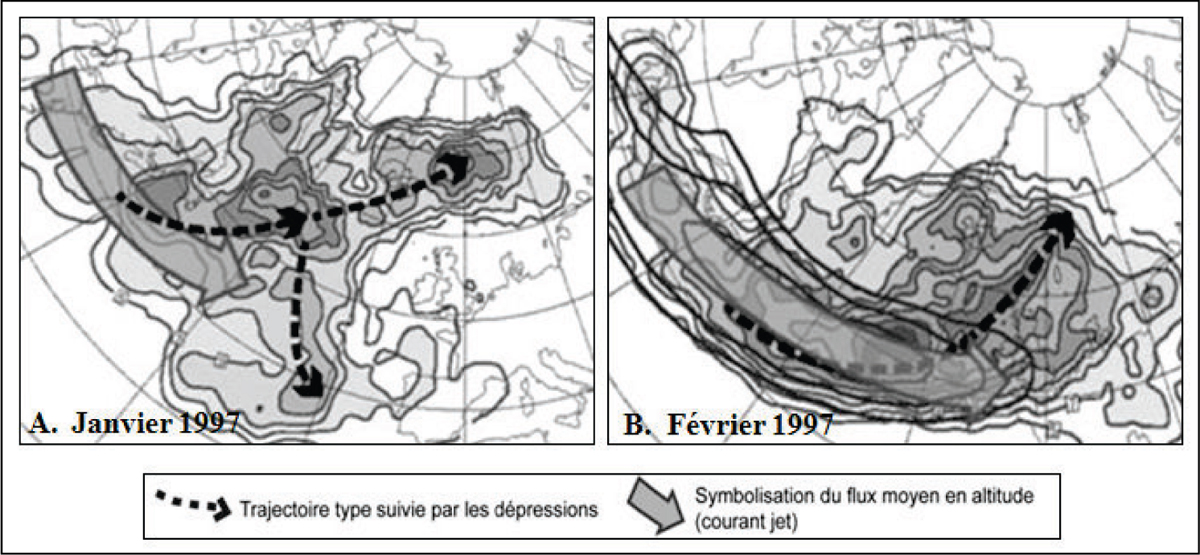Figure 18

Download original image
A) Le rail des dépressions en janvier 1997, avec une configuration de blocage : les tempêtes restent sur l’Atlantique. Le courant-jet, courant d’altitude, est limité à la partie ouest de l’océan Atlantique (d’après C. Baehr et al., 1999; source : http://www.cnrm.meteo.fr/dbfastex/recyf_temp/tempet003.html#railbloc). Rail of low air pressure in January 1997. The meteorological configuration is “blocked”: storms stay in Atlantic zone. The jet-stream is confined to the West part of the Atlantic Ocean (from Baehr et al., 1999; source: http://www.cnrm.meteo.fr/dbfastex/recyf_temp/tempet003.html#railbloc). B) Le rail des dépressions en février 1997. Dans cette configuration dite « zonale », le rail des dépressions s’étend le long du 50ème parallèle. Les dépressions ne sont pas bloquées. On remarque que le courant-jet s’étend plus à l’est et que les dépressions ont tendance à couper le courant-jet du côté de son extrémité est (d’après C. Baehr et al., 1999; source : http://www.cnrm.meteo.fr/dbfastex/recyf_temp/tempet004.html#railzonal). Rail of low air pressure in February 1997. In this “zonal” configuration, the rail of low air pressure extends along the 50th parallel North. Low air pressure is not blocked. We notice that jet-stream extends to East and low air pressure can cut the eastern extremity of the jet-stream (from Baehr et al., 1999; source: http://www.cnrm.meteo.fr/dbfastex/recyf_temp/tempet003.html#railbloc).
Current usage metrics show cumulative count of Article Views (full-text article views including HTML views, PDF and ePub downloads, according to the available data) and Abstracts Views on Vision4Press platform.
Data correspond to usage on the plateform after 2015. The current usage metrics is available 48-96 hours after online publication and is updated daily on week days.
Initial download of the metrics may take a while.




